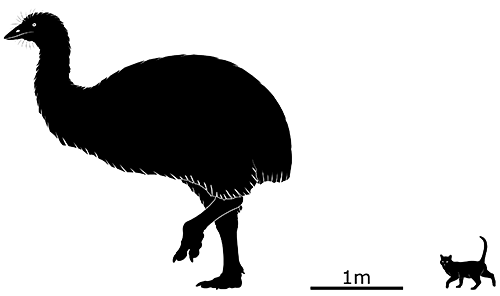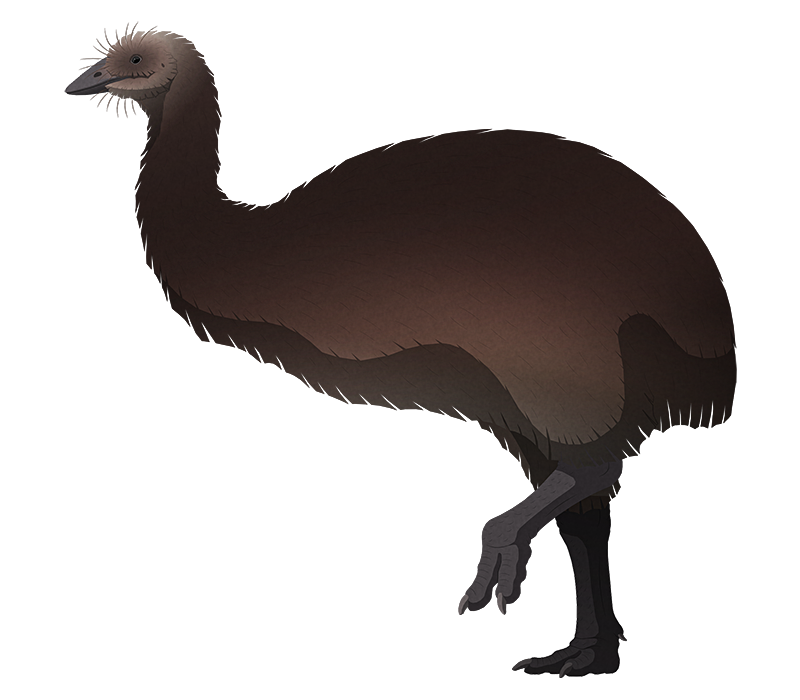Along with a lot of unusual mammals, Madagascar was also home to some of the largest birds to ever exist: the giant elephant birds.
Despite being located so close to mainland Africa, these enormous flightless ratites weren’t the closest relatives of ostriches as might be expected. Instead their closest living relatives are the kiwis of New Zealand, and they must have descended from flying ancestors that reached Madagascar across the Indian Ocean sometime during the early-to-mid Cenozoic.
Aepyornis maximus was one of the biggest of these big birds, standing around 3m tall (9′10″) and weighing over 500kg (1,100 lbs). Its eggs were equally massive, up to 34cm long (1’1″) and with a circumference of over 1m (3′3), making them the largest known eggs laid by any vertebrate.
Recent studies of the shape of its brain within its skull show that it had a good sense of smell but very poor eyesight – possibly being near-blind – suggesting that much like its kiwi relatives it was highly specialized for a nocturnal lifestyle.
There were several other species of elephant bird throughout Madagascar, and at least some of them appear to have successfully survived alongside humans for quite some time. Carbon dating of eggshells suggests they were still alive around 1000 years ago, and based on historical mentions they may have persisted as late as the 1600s before finally disappearing.


